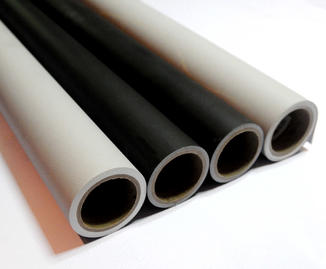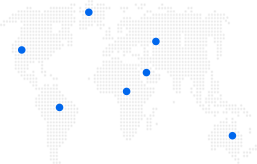Outdoor advertising continues to evolve as businesses prioritize durability, clarity, and cost-effectiveness in promotional displays. Among various substrates, PVC banner material has become one of the preferred options due to its balance of strength, visual performance, and environmental resilience.
Why Material Choice Determines Outdoor Advertising Effectiveness
Outdoor advertising must withstand unpredictable climates, UV exposure, pollution, mechanical stress, and long viewing distances. The material chosen affects:
- Clarity of printed graphics
- Durability under constant exposure
- Installation stability
- Cost of production and replacement
- Compatibility with wide-format printing equipment
PVC banner material is engineered to deliver predictable results in these areas, making it suitable for billboards, street banners, event backdrops, traffic-facing displays, and seasonal promotions.
Structural Composition of PVC Banner Material
PVC banner material generally consists of a PVC coating bonded to a polyester mesh or scrim. This composite structure delivers mechanical strength while maintaining flexibility.
Typical Structural Features
| Component | Function | Impact on Outdoor Performance |
|---|---|---|
| PVC coating | Protects surface, supports inks | Ensures vibrant graphics and weather resistance |
| Polyester scrim | Provides tensile strength | Prevents tearing under wind and tension |
| Surface finish (gloss/matte) | Controls light reflection | Improves visibility in variable lighting |
| Optional blockout layer | Prevents light penetration | Enables double-sided printing and clear colors |
These design factors allow PVC banner material manufacturers to fine-tune weight, stiffness, and surface texture to suit different outdoor environments.
Visual Performance and Print Compatibility
The ability of PVC banner material to display consistent, high-resolution graphics is central to its role in outdoor advertising.
Key Visual Advantages
-
Excellent ink adhesion
The chemical compatibility between PVC coating and solvent, eco-solvent, UV, or latex inks ensures strong bonding. -
High color saturation
Smooth surface finishes allow accurate color reproduction for long-distance viewing. -
Low light scattering
Matte options reduce glare, ensuring readability in bright sunlight. -
Stable image retention
UV-resistant formulations reduce fading, an essential requirement for outdoor displays exposed 8–12 hours daily.
Visual Characteristics of Common PVC Banner Types
| Banner Type | Surface Properties | Best Use Case |
|---|---|---|
| Frontlit banner | Smooth, high brightness | Storefronts, event signage, wall-mounted ads |
| Backlit banner | High translucency | Lightboxes, illuminated billboards |
| Blockout banner | Opaque, no light transmission | Double-sided street banners |
| Mesh banner | Perforated for airflow | High-wind areas, building wraps |
Such versatility allows outdoor advertising designers to select tailored substrates depending on messaging location, viewing distance, and lighting conditions.
Weather Resistance and Outdoor Reliability
Outdoor environments expose banners to:
- UV radiation
- Temperature fluctuations
- Wind and storm impact
- Humidity, rain, and pollution
PVC banner material mitigates these threats due to its inherently stable polymer structure.
UV and Heat Resistance
The PVC base resists UV degradation more effectively than many organic fibers. Stabilizers incorporated during production further prevent brittleness, fading, and color distortion.
Moisture and Humidity Protection
PVC does not absorb water. This protects banners from swelling, shape deformation, and microbial growth.
Wind Load Management
Reinforced scrim design and optional mesh construction reduce wind damage by:
- Increasing tensile strength
- Permitting partial airflow
- Reducing flap movement
These characteristics maintain banner stability and extend service life.
Installation Flexibility in Multiple Environments
PVC banner material adapts well to both temporary and long-term installations, including street poles, fences, building facades, exhibition trusses, and outdoor shops.
Installation Advantages
- Works with eyelets, rope ties, adhesive tapes, and frame systems
- Lightweight enough for large-format installation
- Flexible enough to conform to curved or irregular surfaces
- Compatible with welding, stitching, and high-frequency sealing
This flexibility reduces labor difficulty and minimizes installation-related damage.
Maintenance and Longevity
Outdoor banners must remain presentable with minimal upkeep. PVC banner material requires only basic cleaning using mild detergents. It retains structural integrity for extended periods without frequent replacement.
Key Durability Indicators
| Feature | Benefit |
|---|---|
| Anti-fungal properties | Prevent surface spots in humid regions |
| Anti-tear scrim | Maintains banner edges and corners |
| High-strength lamination (optional) | Extends lifespan for long-term display |
| Dirt-resistant coating | Keeps graphics sharp and clean |
These performance traits make PVC banner material ideal for cost-conscious marketing campaigns that still require visual impact.
Sustainable Development and Recyclability Considerations
Although PVC is a synthetic polymer, advancements in material engineering have introduced eco-friendlier formulations, including:
- Phthalate-free PVC
- Recyclable banner substrates
- Lightweight materials that reduce transport energy
- Longer product life cycles that reduce waste
PVC banner material manufacturers are gradually adopting cleaner production technologies to meet global environmental expectations.
Economic Value and Advertising ROI
Advertisers assess outdoor materials not only for visual impact but also for financial practicality. PVC banner material offers:
Competitive production cost due to mature manufacturing processes
Long usable lifespan, which lowers replacement frequency
High print compatibility, reducing misprints and waste
Scalability for both small local ads and massive outdoor displays
These factors collectively enhance advertising ROI by offering reliability at predictable cost levels.
Key Metrics for Selecting PVC Banner Material
To maximize outdoor advertising performance, buyers should evaluate several technical specifications.
Selection Criteria Table
| Metric | Recommended Range | Why It Matters |
|---|---|---|
| Weight (gsm) | 260–550 | Balances strength and flexibility |
| Tensile strength | Medium–high | Prevents tearing during strong winds |
| Surface finish | Matte/Gloss | Adjusts visibility according to lighting |
| Print compatibility | Solvent/UV/Latex | Ensures color durability |
| Opacity | Standard/Blockout | Prevents image interference |
| Airflow (mesh banners) | Variable | Improves stability in windy environments |
Understanding these parameters helps ensure that the selected material aligns with display goals, environmental conditions, and printing technology.
Conclusion: Why PVC Banner Material Remains the Backbone of Outdoor Advertising
PVC banner material enhances outdoor advertising performance by striking the right balance between durability, print quality, installation efficiency, and cost advantage. Its structural stability ensures long-lasting visibility, while its visual clarity supports impactful messaging in high-traffic environments. As PVC banner material manufacturers continue to refine production techniques and improve surface characteristics, this substrate remains a core solution for outdoor marketing applications.
Whether used for street banners, commercial billboards, or event signage, PVC banner material offers consistency, adaptability, and strong performance—key pillars for effective outdoor advertising.

 English
English CN
CN ES
ES 86-573-88890126
86-573-88890126












